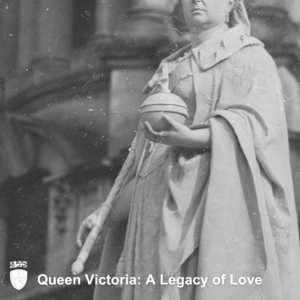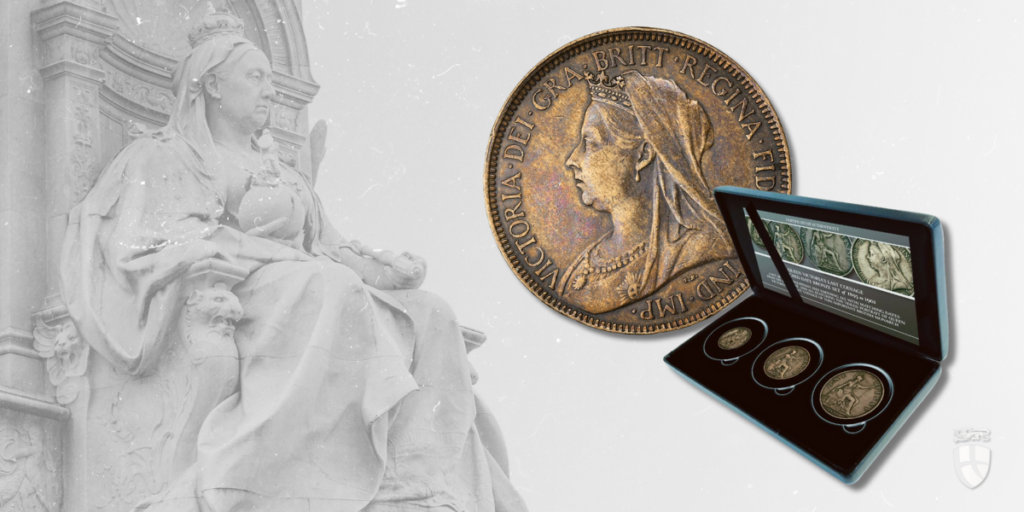As we celebrate Queen Victoria’s Birthday, we reflect on the profound impact of her life and reign. Known for her enduring love story with Prince Albert, her significant contributions to the British Empire, and the iconic Veiled Portrait coinage, Queen Victoria’s legacy continues to fascinate and inspire. Join us as we explore the remarkable history and lasting influence of this beloved monarch.
Table of Contents
- Queen Victoria’s Remarkable Reign
- The Great Love Story of Queen Victoria and Prince Albert
- The Wedding Attire: A Symbol of Royal Romance
- The Significance of Queen Victoria’s Mourning Veil
- Queen Victoria’s Funeral and the Items She Was Buried With
- Honouring Queen Victoria: The Veiled Portrait Bronze Set
- Matching Year-Date Set of Queen Victoria’s Last Coinage – The Queen Victoria Veiled Portrait Set
- Conclusion: A Legacy Remembered
Celebrating Queen Victoria’s Birthday: A Legacy of Love and Impact
As we commemorate Queen Victoria’s birthday in 2024, we reflect on the enduring legacy of her life and reign. Known for her profound impact on the British Empire, her deep love story with Prince Albert, and the significant symbols of her life, Queen Victoria remains an iconic figure in history.
Queen Victoria’s Remarkable Reign

Queen Victoria reigned for 63 years, from 1837 to 1901, making her one of the longest-reigning monarchs in British history. Her reign, known as the Victorian era, was marked by significant industrial, cultural, political, scientific, and military changes within the United Kingdom and was a period of great expansion for the British Empire.
The Great Love Story of Queen Victoria and Prince Albert
Queen Victoria’s marriage to Prince Albert of Saxe-Coburg and Gotha was a cornerstone of her life. Their love story is one of the most famous royal romances, characterized by deep affection, mutual respect, and partnership. Victoria first met Albert when she was just 16 years old, and they quickly formed a close bond. Writing in her diary, Victoria described Albert as having “a most pleasing and delightful exterior” and noted that “his large blue eyes are the most expressive I ever saw.”
They married on February 10, 1840, at the Chapel Royal, St. James’s Palace. Victoria was deeply in love with Albert, and her diaries from their wedding day reveal her profound happiness. She wrote, “I never, never spent such an evening!!! My dearest dear Albert… his excessive love & affection gave me feelings of heavenly love & happiness I never could have hoped to have felt before! He clasped me in his arms, and we kissed each other again and again!”
The Wedding Attire: A Symbol of Royal Romance
Queen Victoria’s wedding attire was a significant departure from royal tradition. She chose a white satin dress, trimmed with Honiton lace, which set a trend for brides worldwide. Her gown was a symbol of purity and simplicity, contrasting with the often extravagant royal attire of the time. Victoria complemented her dress with a wreath of orange blossoms instead of a tiara, emphasizing her youthful innocence and love. Her Honiton lace veil was a delicate and beautiful piece that became a central part of her bridal ensemble.
The Significance of Queen Victoria’s Mourning Veil
After Prince Albert’s death in 1861, Queen Victoria entered a state of deep mourning that lasted for the rest of her life. She wore black mourning attire, including a mourning veil, which became a powerful symbol of her enduring love and grief. Victoria’s mourning attire was not just a personal expression of her loss but also influenced the wider practices of mourning in the Victorian era.
Queen Victoria’s Funeral and the Items She Was Buried With
Queen Victoria’s funeral, held in February 1901, was a significant event marking the end of an era. In accordance with her wishes, she was buried in her white wedding dress and veil, symbolizing her eternal union with Prince Albert. Alongside her in the coffin were numerous personal mementos, including Albert’s dressing gown, a plaster cast of his hand, and photographs of her family. These items reflected her deep connections and affections, serving as a testament to her enduring love and the personal losses she endured throughout her life.
Honouring Queen Victoria: The Veiled Portrait Bronze Year Set
In 1893, a new portrait of Queen Victoria was introduced on British coinage, depicting her in a widow’s veil. This portrait, known as the Veiled Portrait, became iconic as it was the first and only time a British monarch was depicted in this manner. This final coinage of Queen Victoria’s reign is now a cherished collectible.
Matching Year-Date Set of Queen Victoria’s Last Coinage – The Queen Victoria Veiled Portrait Bronze Set
Hattons of London proudly offers the Queen Victoria Veiled Portrait Bronze Year Set. This exclusive set includes one of each bronze coin: a penny, halfpenny, and farthing. Each coin in the set bears the same year-date, spanning from 1895 to 1901. The coins feature the Veiled Portrait of Queen Victoria and come with a Certificate of Authenticity and a luxurious presentation case.
Priced at only $99, this set is a perfect tribute to the final coinage of a monarch who reshaped history.
Secure yours now – limited availability.
Conclusion: A Legacy Remembered
As we celebrate Queen Victoria’s birthday, we honour her profound impact on history, her enduring love story with Prince Albert, and the significant symbols of her life and reign. The Queen Victoria Veiled Portrait Bronze Year Set from Hattons of London offers a unique way to connect with this remarkable period in history.
Explore this exclusive collection and commemorate the lasting legacy of Queen Victoria, here.




